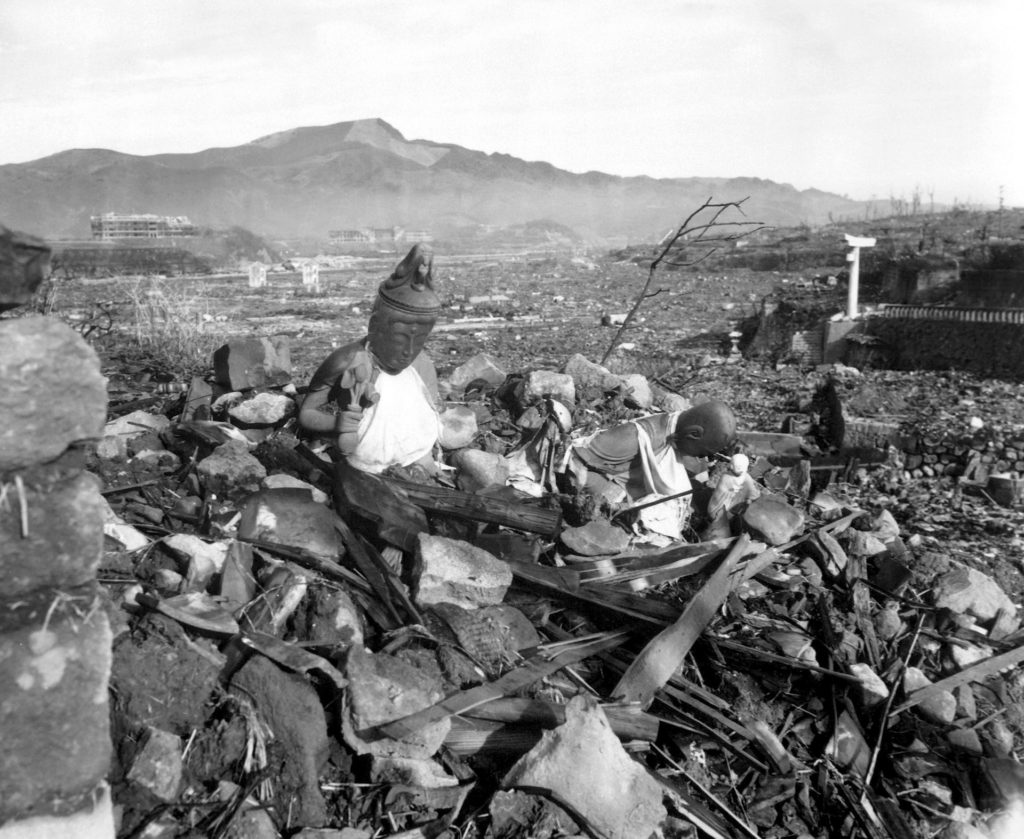How did WWII end?
by Ailsa Harvey · 09/08/2020
75 years ago, the Allies clinched a dramatic and destructive victory in Japan

(Image source: Pixabay)
World War II raged from 1939–1945, leaving millions dead in its wake. It consumed the world in gunfire and destruction, as the Allies faced off against the Nazis and the other Axis nations. Claiming around 80 million lives, it is the deadliest war the world has ever faced. But what made the last nations finally lay their guns down?
Following the fall of Berlin in May 1945 and the surrender of two of the three Axis nations – Italy and Germany – war in the European theatre ended. However, Japan still remained at war with the Allies. Gathered in Potsdam, Germany, in July 1945, Allied leaders including the US President Harry S. Truman, British Prime Minister Winston Churchill and Chinese Nationalist leader Chiang Kai-shek outlined terms for a Japanese surrender, known as the Potsdam Declaration.
This proposal, however, came with a dire warning. Should the Japanese refuse to unconditionally surrender, they would face “prompt and utter destruction.” These calls for a final resolution to the war were ignored by the Japanese government, and the threat of destruction soon became a reality.
The US prepared to end the war by unleashing a type of bomb the world had never seen before. During the war nuclear physics was still in its infancy, but teams of scientists led by physicist and engineer J. Robert Oppenheimer utilised the recent discovery of nuclear fission – where a large amount of energy can be produced from a nuclear chain reaction – to create two nuclear bombs with huge destructive force.
The Japanese cities of Hiroshima and Nagasaki were hit with nuclear strikes by US forces on 6 and 9 August 1945 respectively, causing widespread devastation and fatalities. Fearing complete destruction, Japan surrendered on 15 August, with Emperor Hirohito announcing, “the war situation has developed not necessarily to Japan’s advantage… the enemy has begun to employ a new and most cruel bomb”. It’s now known as VJ Day (Victory over Japan), but it wasn’t until 2 September that Japanese officials formally signed the unconditional surrender, marking the end of World War II.

(Image source: Pixabay)
The destruction of Nagasaki
In a second attempt to end World War II, a mere three days after the attack on Hiroshima, another American B-29 aircraft nicknamed ‘Bockscar’ headed for the densely populated Japanese city of Kokura. Onboard was a five-ton plutonium bomb called ‘Fat Man’. Dense cloud coverage, however, prevented the bomb’s release, and so Kokura was spared, forcing the American bomber to fly to the seaport city of Nagasaki. Finding a break in the clouds, Fat Man was dropped on the city and detonated, delivering an explosion equivalent to 21,000 tons of TNT, killing around 40,000 people and leaving the city in ruins.
This article was originally published in How It Works issue 128, written by Scott Dutfield
For more science and technology articles, pick up the latest copy of How It Works from all good retailers or from our website now. If you have a tablet or smartphone, you can also download the digital version onto your iOS or Android device. To make sure you never miss an issue of How It Works magazine, subscribe today!




